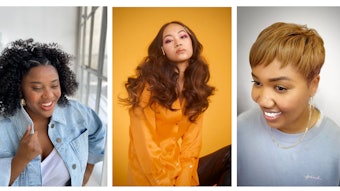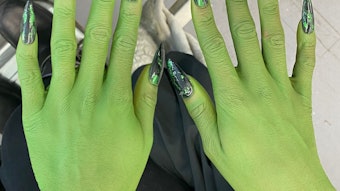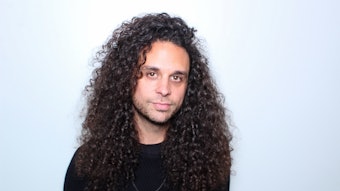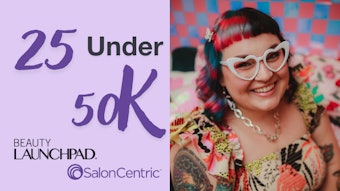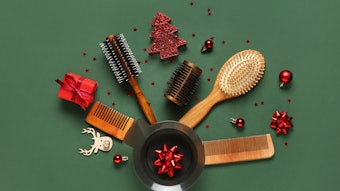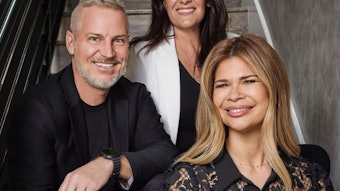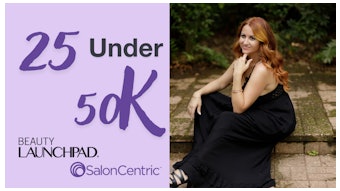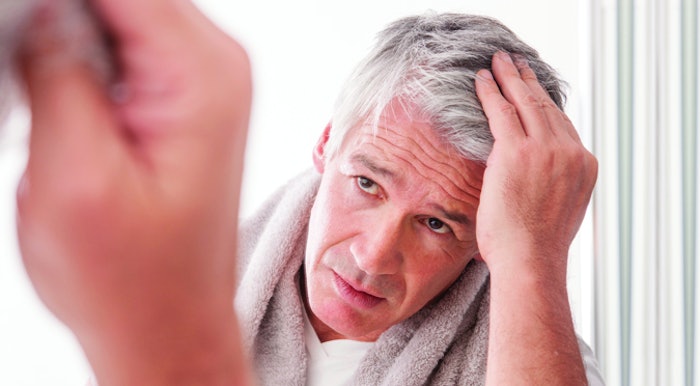
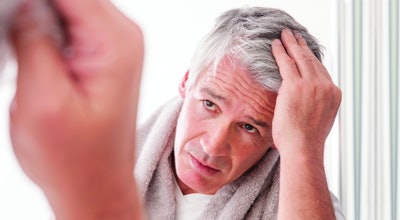
Win over more thinning-hair clients with services, treatments and advice that truly support their needs.
There's a reason why androgenetic alopecia is also known as “common” male pattern baldness: It accounts for more than 95% of hair loss in men. No wonder stylists and barbers see the signs of hair thinning in their male customers on a daily basis. How you respond, however, can make a big difference in whether you’ll be seeing those guys again. From health information to non-surgical services to homecare treatment recommendations, here’s how to address your clients’ hair loss issues.
Hair loss in adult men almost always originates in their genes, via an inherited hair follicle characteristic called DHT (dihydrotestosterone) sensitivity, which ultimately shrinks and shortens the life of the follicles. “The gene causes a predisposition for that person’s testosterone to convert to DHT, which starts being produced in puberty to create body hair,” explains Michelle Blaisure, certified trichologist and director of education for Bosley. “Then, in that male’s late teens, 20s and 30s, the majority of hair thinning has begun.”
PHOTOS: Products for Your Clients Seeking Fuller-Looking Hair
To help clients understand what is happening, tell them about the three stages in the life of their hair: the androgen, or growing, stage; the catogen stage, when hair is no longer growing and begins to detach; and the telogen, or resting stage, during which hair is shed. The androgen stage can be anywhere from two to six years long, but DHT shortens that cycle. “For many men, the follicle simply stops,” says Blaisure. “Sometimes it has gone dormant, so it’s still living, but just not producing.”
Less common causes of hair loss involve reactions to diseases and medical treatments or medications. We all know that chemotherapy results in hair loss, but few people realize that common drugs used to treat conditions such as depression, high blood pressure, inflammation and hormonal imbalances can have the same effect. The hair loss in these instances is usually temporary and resolves if the cause is eliminated. (Your hair client might not have considered this possibility and should ask his doctor about the side effects of the medications he’s taking.)
Highly stressful or traumatic events can also cause people to lose their hair. This type of hair loss is called telogen effluvium, and it can occur weeks or even months after the triggering event. Fortunately, this is usually a temporary condition.
If a guy can’t go to his barber or stylist about his hair loss, who can he go to? Men dealing with this problem need your advice and understanding. More important, they need a professional with the expertise to help them. Hair loss experts agree that the earlier in life you can address the problem, the better the odds of holding on to, or even nonsurgically, restoring the hair.
The winning formula:
1) A healthy, balanced scalp - “Most hair products do nothing for the scalp,” points out Jill Sugar, owner of Thursday’s Salon & Spa in Calabasas, California, whose business specializes in providing non-surgical hair restoration treatments. “But the sebum that develops on the scalp suffocates the hair follicles, so we concentrate on the hair and the scalp.” Blaisure agrees that the “microbiome” on the skin of the scalp plays a signifi cant role in hair thinning. “Just as gut bacteria balances the body’s internal environment, cosmetic treatments can help balance the scalp’s exterior,” she says. “The right daily shampoo can help remove inflammation-causing sebum.”
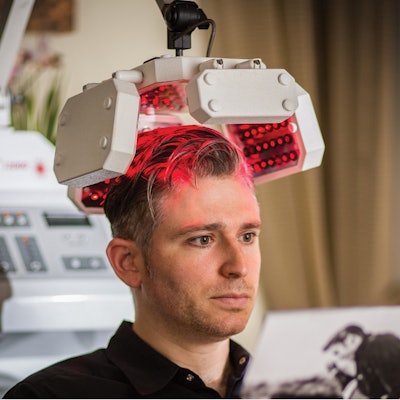
Thursday’s uses a cool laser to stimulate blood flow and slow the anagen stage. “The laser can’t cure the condition, but it postpones its effects for a long time,” says Sugar. “Laser hair rejuvenation works best at the onset of hair loss, as it stimulates new growth and thicker density. This is why it’s geared toward a younger demographic.” The salon uses Scripps Health’s laser and products, but also has its own hair-and scalp-care line.
Many hair rejuvenation products focus on stimulating and opening up the scalp. Among the go-to ingredients: minoxydyl, which can sometimes “wake up” dormant hair follicles; niacin, a B vitamin that works as a vasodilator; chemical peel agents, such as salicylic acid; and invigorating botanicals, such as peppermint. These products often also contain soothers, like aloe and essential oils, to protect sensitive scalp skin.
3) Internal balance - knowing that DHT is the culprit in most hair loss cases, researchers are working on ways to address the problem at its root, so to speak. Beverly Hills, California-based cosmetic surgeon Robert Nettles developed his Stop & ReGROW hair loss solution program with this approach in mind. “Dr. Nettles’ program is focused on stopping follicle-killing DHT from binding to the follicle,” says Stop & ReGROW’s chief marketing officer, Tracy Bowyer. The personalized program—which comes with a 12-month, money-back guarantee—involves a battery of lab tests to assess hormonal balance, a proprietary topical foam treatment and a pill, both available by prescription only. “The pills are designed to reduce the amount of DHT in the system,” explains Nettles. “Testosterone and DHT are identical in chemical makeup except that DHT has two extra oxygen molecules on it. Our pill is formulated to remove the extra oxygen molecules and put them back into our system where they are harmless.”
Many dermatologists prescribe an oral treatment containing the ingredient finasteride, a hormone-blocker that was originally used as a prostate treatment but became a hair loss drug when hair regrowth was discovered as a side effect.
Other internal factors are nutrient-related, and there are numerous ingestible supplements designed to ensure that the body is supplying the scalp with what it needs to function optimally, most notably vitamins A and D, B vitamins, biotin, folic acid and minerals. Of course, a diet rich in these nutrients is recommended
– by Linda Kossoff
